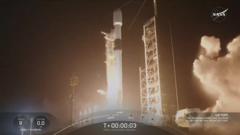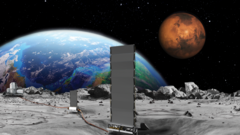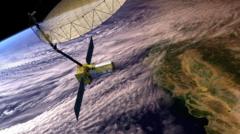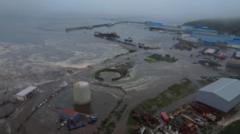In a groundbreaking step for commercial space exploration, a Falcon 9 rocket launched two private lunar landers from Florida, marking a significant milestone in the growing trend of commercial missions to the Moon.
SpaceX Launches Private Missions to the Moon in Rideshare Program

SpaceX Launches Private Missions to the Moon in Rideshare Program
Two lunar landers from the US and Japan embark on their journeys aboard a SpaceX Falcon 9 rocket.
The news article follows:
On Wednesday, the Falcon 9 rocket successfully launched from the Kennedy Space Center in Florida at 01:09 local time (06:09 GMT), carrying two lunar landers designed by private firms: Firefly Aerospace from the United States and ispace from Japan. This mission is part of a rideshare initiative aiming to expand lunar exploration through private sector involvement.
Once the rocket reaches the Moon's orbit, the landers will separate to perform individual missions. Firefly Aerospace's Blue Ghost rover is projected to take approximately 45 days to reach the Moon. Its mission involves drilling, collecting samples, and conducting X-ray imaging of the Earth's magnetic field, which will enhance scientific understanding and aid future human exploration.
Meanwhile, ispace's Resilience lander has a longer journey, estimated to take up to five months to touch down on the lunar surface. Upon arrival, it will deploy a rover and attempt to collect regolith, or loose surface material, for analysis. NASA is supporting this venture, which, if successful, will be its largest fleet of commercial deliveries to the Moon to date.
This marks a significant moment for commercial space exploration, building on the precedent set by Intuitive Machines last year, which made history as the first commercial company to deliver a lander to the Moon—a milestone previously achieved solely by state agencies from the US, USSR, China, India, and Japan.
In addition to the lunar mission, SpaceX is preparing for the seventh orbital flight test of its Starship rocket, scheduled to launch from Texas later today at 16:00 local time (22:00 GMT). As both private and public efforts continue to push the boundaries of space exploration, the future of lunar and Mars missions looks increasingly promising.
On Wednesday, the Falcon 9 rocket successfully launched from the Kennedy Space Center in Florida at 01:09 local time (06:09 GMT), carrying two lunar landers designed by private firms: Firefly Aerospace from the United States and ispace from Japan. This mission is part of a rideshare initiative aiming to expand lunar exploration through private sector involvement.
Once the rocket reaches the Moon's orbit, the landers will separate to perform individual missions. Firefly Aerospace's Blue Ghost rover is projected to take approximately 45 days to reach the Moon. Its mission involves drilling, collecting samples, and conducting X-ray imaging of the Earth's magnetic field, which will enhance scientific understanding and aid future human exploration.
Meanwhile, ispace's Resilience lander has a longer journey, estimated to take up to five months to touch down on the lunar surface. Upon arrival, it will deploy a rover and attempt to collect regolith, or loose surface material, for analysis. NASA is supporting this venture, which, if successful, will be its largest fleet of commercial deliveries to the Moon to date.
This marks a significant moment for commercial space exploration, building on the precedent set by Intuitive Machines last year, which made history as the first commercial company to deliver a lander to the Moon—a milestone previously achieved solely by state agencies from the US, USSR, China, India, and Japan.
In addition to the lunar mission, SpaceX is preparing for the seventh orbital flight test of its Starship rocket, scheduled to launch from Texas later today at 16:00 local time (22:00 GMT). As both private and public efforts continue to push the boundaries of space exploration, the future of lunar and Mars missions looks increasingly promising.

















